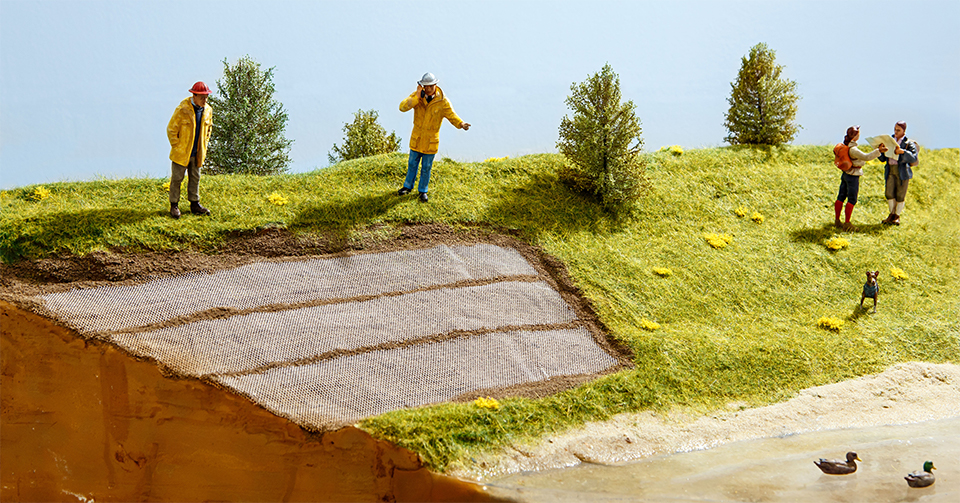New approaches to making geosynthetics and roofing membranes more sustainable

Zirk-Tex

As part of the Fraunhofer Cluster of Excellence Circular Plastics Economy (CCPE), the Fraunhofer institutes IAP, IML, UMSICHT, IVV, ICT, IME, and IOSB, under the project management of the LBF, are nearing completion of a joint research project that has set two priorities:
In the case of mass-produced plastics such as polypropylene (PP) and polyethylene terephthalate (PET), the proportion of recycled plastics in products available on the market still has room for improvement compared to the quantities of new materials put into circulation. The proportion of bio-based polymers is even lower in comparison and limited to a few applications. Regulatory changes in particular, but also increasing customer demand, are driving a growing need for more sustainable solutions. Plastic recyclates can become more widespread if compounders and end users have access to higher-quality recyclates. Despite the many fractions offered by the various collection systems, the possibilities for reuse are limited because contaminants and foreign materials make sorting, purification, and processing into recyclates difficult for recyclers. As a result, recycled materials cannot compete with virgin materials due to quality or economic factors. Plastics developed from renewable raw materials are often not yet available in large quantities and are limited in their application due to their mechanical properties or their degradation properties in end-of-life scenarios.
In the project, which is nearing completion, the entire process chain for polypropylene (PP) and polyethylene terephthalate (PET) was developed, from sorting previously low-quality material streams through the recycling process (solvolysis (glycolysis) and solvent-based recycling), the application-optimized improvement of recyclate quality through the selection of customized additive packages by Fraunhofer LBF, and shaping. As application scenarios, fibers for nonwoven production (PET and PP) and films (PP) for the manufacture of roof underlayments were specifically developed. With regard to the use of biopolymers, the project focused on polylactide (PLA) and polybutylene succinate (PBS) for the production of biodegradable geotextiles, which are subject to a defined degradation period at the end of their defined service life. The development work for both the recycled plastics and the biopolymers was supported from the outset by life cycle analyses (LCA). In addition to controlled degradation in soil, tests were also carried out in aquatic environments to verify the ecotoxicological safety of the new developments.
Fraunhofer LBF contributed its expertise and many years of experience in aging and weathering tests and in the development of additive concepts to the project. The subsequent applications will have to meet special requirements in terms of stability and, in the case of biopolymers, controlled degradation of the materials at the end of their service life – our Additives department ensures that these requirements are met. We were able to demonstrate that the degradation behavior of bioplastics can be adjusted by adding a customized additive system. In addition, the additives were found to have no negative effects on ecotoxicological properties. Furthermore, it was shown that high-quality processed waste streams can be made suitable for the intended applications through re-additivization.
As a Fraunhofer institute, we attach great importance to the practical relevance of our R&D and work closely with partners from industry. We are therefore delighted about the interest in our project and would be even more delighted to work actively with partners from industry and business. Please feel free to contact us!
Dr. Jannik Hallstein | Fraunhofer LBF